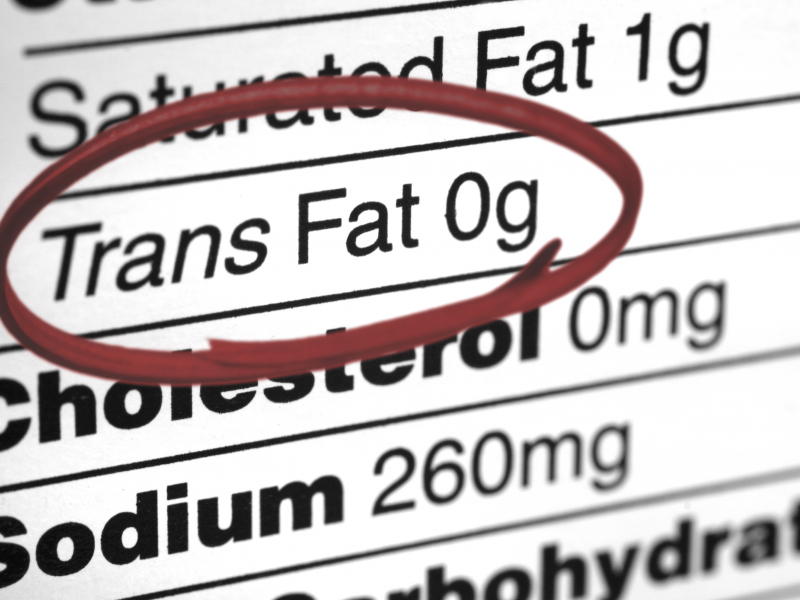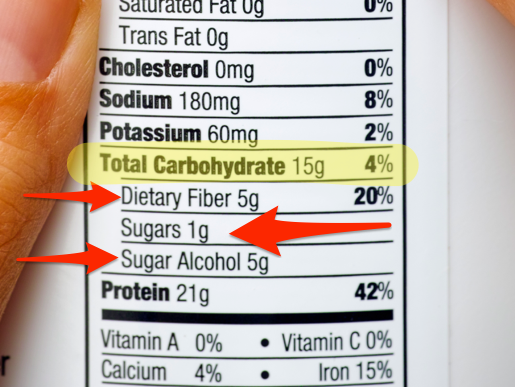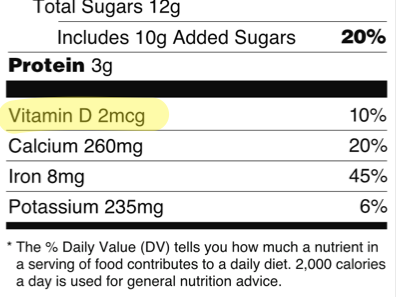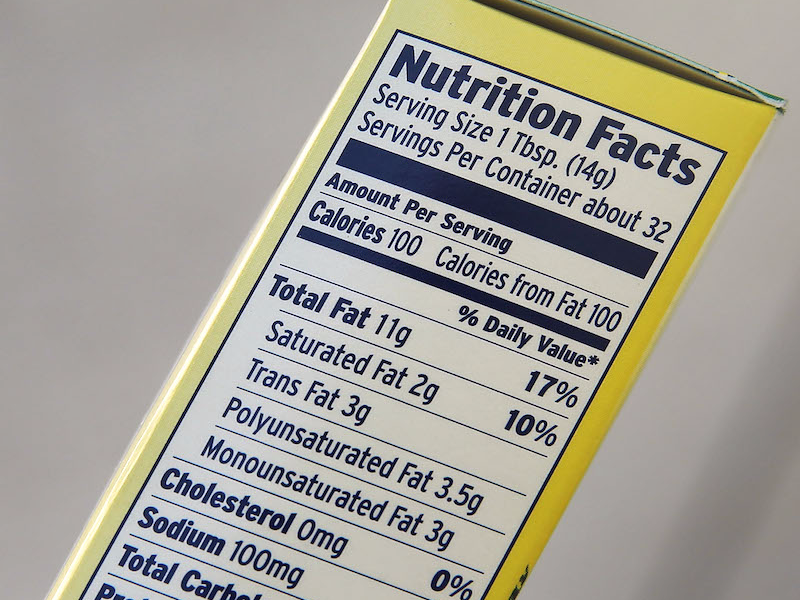- Nutrition labels are on all packaged foods and they list the macro and micronutrients of the food inside.
- Calories tend to be at the top of the list, but they aren’t necessarily the only number you should be paying attention to.
- Paying attention to the fats, sodium, carbohydrates, protein, vitamins, and minerals can be just as important as calories, especially if you are trying to lose weight.
In the US, nutrition labels are on the backs or sides of packaged foods, from a can of beans to a bag of chips. Calories tend to be close to the top and with the FDA’s new nutrition labels, they’ll be required to be at the top and in a bigger, bolder font by 2020 for larger manufacturers and by 2021 for smaller manufacturers, although many companies have already switched over.
But the calories aren’t necessarily the only thing people should be looking at on nutrition labels. Knowing the fats, sodium, carbohydrates, and protein in your food can be useful when trying to have a healthy diet and lifestyle.
“There’s lots of information to be looking at,” Kris Sollid, a dietitian and Senior Director of Nutrition Communications at the International Food Information Council Foundation told INSIDER.
Sollid said it’s important to pay attention to calories, but from there, the other numbers you check on your nutrition labels depend on your health, lifestyle, and goals.
"Generally speaking, they're all there because they're all important," he said. "It just depends on how you use the information, what you're looking to gain from that information … looking at any one of these micro or macronutrients in isolation is not recommended. It's not a way to build a healthy diet, it's the total package that matters the most."
Here's what the other numbers on nutrition labels mean and why you may want to pay attention to them.
Serving sizes aren't just vague recommendations.

Nutrition labels are aren't recommendations for how people should eat, Sollid told INSIDER. They're actually based on dietary surveys and consumption data. So the serving sizes you see on nutrition labels are based on the average amount customarily consumed in one sitting.
Serving sizes are calculated using a lot of factors including a strict set of regulations from the US Food and Drug Administration.
"So many people have a misconception that these are the recommended amounts to be eating, whatever that serving size is of that product," Sollid said. "These are not recommendations like you would find on the dietary guidelines. Serving sizes are derived from the amount we typically eat … [and] are determined by the government, depending on the food or food category."
It is also important to remember that the rest of the information on a nutrition label is based on a single serving, so if you eat more than the serving size, you have to multiply the amounts of macro and micronutrients to calculate how much you've consumed.
It's usually easier to focus on grams and milligrams than on Percent Daily Value.

Sollid said it's probably easier for people to pay more attention to the actual amounts in grams and milligrams of macronutrients than it is to follow the Percent Daily Values on nutrition labels, which are based on a 2,000 calorie diet.
"I don't know that the average person can quickly interpret the DVs in the right way, because those are also based on your calorie needs," he said. In many cases, you're probably not consuming exactly 2,000 calories per day.
He said that while some recommendations, like for sodium, are the same regardless of caloric intake (and so are easier to follow with the PDV), other recommendations, like for carbohydrates, depend on how many calories you need to manage your weight.
You may want to focus on the types of fat you're consuming more than the total fat.

"A simple rule of thumb is, you want to look for products that have more unsaturated than saturated fats," Sollid said. "That's just kind of a general nutrition advice, that's probably easiest for most people to comprehend.
He said generally you don't want to focus on your total grams of fat - you want to focus on the type of fat you eat.
He said saturated fat should be limited to 10% or less of your total calories.

Unsaturated fats are not required to be marked on nutrition labels, but depending on the product, they may be voluntarily posted. Those unsaturated fats, particularly polyunsaturated and monounsaturated fats are the kinds of fats that can be beneficial for heart health, Sollid told INSIDER.
Meanwhile, he said saturated fats should be kept to a minimum but not necessarily avoided.
"It's not that saturated fat should be avoided, it's that those other types of fat, the unsaturated variety, should be emphasized."
He said ideally trans fat should be kept as low as possible.

Trans fat was only added to the nutrition facts label in 2006. Sollid said it was the only new line added to the label since its original release in the early '90s, before the newest regulation changes in the past few years.
"It's called out on the label due to its connection to heart disease," Sollid said. "Trans fat should be kept as low as possible."
Dietary cholesterol isn't all that important to monitor.

He said because there's not much evidence that shows dietary cholesterol affects blood cholesterol, cholesterol on nutrition labels aren't the most important number to be watching.
"If there were one line on the label that I would say would be the least important and I had to choose one, I'd probably say it's this one, simply because the evidence connecting dietary cholesterol to your blood cholesterol is not strong," Sollid said. "The issue with cholesterol is more the other nutrients that foods with cholesterol tend to carry with them. [High cholesterol foods] would tend to be higher in saturated fat, for example. And lower in fiber."
Most people would benefit from reducing their sodium intake, which has a set recommended amount, unlike other macronutrients.

In terms of sodium intake, there is a set recommended amount, regardless of caloric intake or gender. The CDC recommendation is 2,300mg per day but Sollid said most people likely consume from 3,400 to 3,500mg daily.
"Sodium is a hotly debated topic in nutrition science and currently where the recommendations land are on the 2,300mg [mark]," he said. "You'll hear from a lot of people that that's maybe overly cautious or that's too low. Some people say that's too high. A lot of people advocate for 1,500mg as the recommendation."
But this varies from person to person. If someone is salt-sensitive or has high blood pressure, they should be more mindful of the 2,300mg recommendation, Sollid added.
In most cases, you might want to focus on specific kinds of carbohydrates instead of focusing on total carbs.

"You'd probably want to be more specific when it comes to carbohydrates," Sollid said. "Now, people with diabetes may have to look at the total carbohydrates more closely than someone who doesn't, but even someone with diabetes would also want to be looking at things like fiber and total sugars because those are just general indicators for the nutrient-density of a product."
He said you should always be trying to increase your fiber intake.

"You want to be looking at increasing your fiber intake where possible and packaged foods have labels that tell you those types of things," he told INSIDER. "It's less of a concern if you're consuming a lot of fruits and vegetables, but similar to fiber intake, no one's meeting those requirements either."
The general recommendation from the US Department of Agriculture is 14g for every 1,000 calories consumed. He said how much fiber you need will fluctuate depending on your calorie consumption.
You may want to keep an eye on your sugar intake for health reasons.

He said although sugar intake has a similar recommendation to saturated fats - the recommendation is more about nutrient displacement than it is about negative health effects.
So if you're eating more than 10% of your calories from sugar, Sollid said you're not likely to get your recommended amounts of other nutrients.
"People often confuse what that number means," Sollid said. "It's not a threshold where all of a sudden your diet becomes unhealthy because you ate more than 10% of your calories from added sugars."
"Now just like with everything we eat, whether its saturated fat or sodium, there are consequences to eating too much added sugar," he added. This could include heart disease or obesity.
Protein is important, but not usually a high concern for most individuals.

"You do need protein, so you do want to get at least a certain amount, but [people in the US] tend to get enough, so underconsumption is not the concern necessarily," Sollid said. "But you do want to be looking to make sure it has an adequate amount of protein."
Although The New York Times reported that individuals in the US typically consume plenty of protein per day, Sollid added that protein helps you feel full and satisfied and, like fiber, it can help you feel fuller for longer.
You should pay attention to vitamins and minerals with the help and recommendations of your doctor if you have specific health needs.

Required vitamins and minerals for every nutrition label are vitamin A, vitamin C calcium, and iron.
"Those have been selected because people don't generally consume enough of them," Sollid told INSIDER. "They're called out on the labels because they want people to be more aware of how and where to get these nutrients from. And they're each important for different reasons."
He said that if you're generally following a healthy diet, the "minutiae" of those vitamins and minerals aren't a major concern. But if you have health concerns, he suggested speaking to your dietitian and doctor to ensure you're properly meeting your vitamin needs.
Visit INSIDER's homepage for more.










